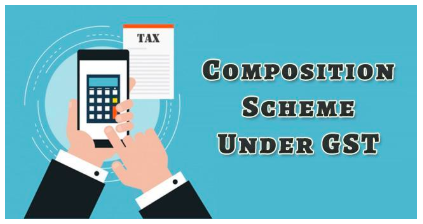
The composition scheme introduced under GST provides a simplified version of tax payments for small entities. Taxpayers registered under this scheme can register and avail the benefits of this scheme subject to eligibility. This scheme comes with a number of benefits in favor of the small business owners.
The GST composition scheme is an initiative by the government that acts as an incentive for smaller businesses as well as new ventures. Small businesses can follow this taxation regime which comes with reduced responsibilities of too many compliances.
Advantages of the scheme
- Rate of tax is lower: The tax rate is nominal and is calculated as a percentage of the turnover
- Less Tax: The amount of tax to be paid is lower
- Lesser number of Compliances: With the reduced number of returns to be filed each year, the maintenance of records and in turn the number of compliances is lesser.
- Better Liquidity: Liquidity is higher for the businesses registered under this scheme. Such available funds always come in handy for small and new businesses
What makes this scheme simpler for small business owners?
Eligibility
The eligibility to opt for this scheme is straightforward. A business having a turnover of Rs 1.5 crore is eligible. For North-Eastern states and Himachal Pradesh, the threshold limit is Rs 75* lakh.
As per the CGST (Amendment) Act, 2018, the supply of services is allowed to the extent of Rs. 5 lakhs or 10% of the turnover, whichever is higher, with effect from the 1st of Feb, 2019. The maximum turnover limit for a service provider is Rs. 50 lakhs.
Under this scheme, in case of multiple businesses registered under a single PAN, all such entities should be considered in consolidation for the purpose of calculation of the turnover. The composition scheme requires the registered taxpayer to provide a declaration before the commencement of the next financial year to be eligible. This cannot be done at any random time.
Registration
A taxpayer wanting to opt for the GST Composition Scheme is required to intimate the government regarding the same. This needs to be done by means of filing Form GST CMP-01 or GST CMP-02. In case this form is filed in the middle of a particular financial year, the rules and regulations become applicable from the subsequent month in which this form is filed.
Returns filing under GST composition scheme
GSTR-4 is a GST Return that has to be filed by a Composition Dealer. Unlike a normal taxpayer who needs to furnish 3 monthly returns, a dealer opting for the composition scheme is required to furnish only 1 return which is GSTR-4.
Types of Returns
List of Returns under GST that are required to be filed every month:
- GSTR- 1
- GSTR- 2
- GSTR- 3
Returns to be Filed Annually
Filing of 3 returns every month along with a final return at the end of the financial year means a total of 37 returns every year.
As against that, a registered person under the composition scheme only has to file two types of returns every financial year.
GSTR- 4: Quarterly
GSTR- 9A: Annually
Less number of returns each year ensures that there is no need for maintenance of regular records which is tedious and time-consuming. Monthly returns and invoice issuance are not necessary. This gives leaves the owners plenty of time to focus on growing the business and other business requirements.
Bill of Supply
A composition dealer needs to issue a ‘Bill of Supply’ instead of a tax invoice since he cannot charge tax to the customers. Dealers registered as composition dealers have to pay the tax on their own. Issuing a bill of supply reduces the burden of maintenance of records.
A bill of supply is easier than issuing a tax invoice since the contents are less tedious. While a tax invoice requires information in detail about the rate of taxes, SGST, CGST, IGST break-up, GSTIN of both parties, description of goods and supplies, etc, a bill of supply requires lesser details.
Since the tax is not charged to each and every customer, the details about tax collected like in the case of a regular GST invoice is not required. One source of tax payment requires a lesser number of compliances and book entries, making the entire process simpler.
Conclusion
Considering the various benefits that come with the composition scheme, it is clear that it has been designed to make it simpler for small businesses to follow the tax regime. The reduced number of compliances and the responsibility of filing monthly returns take away a chunk of burden giving the start-ups enough time to focus on other important aspects. These positives make it clear that the composition scheme is simpler than regular GST.






